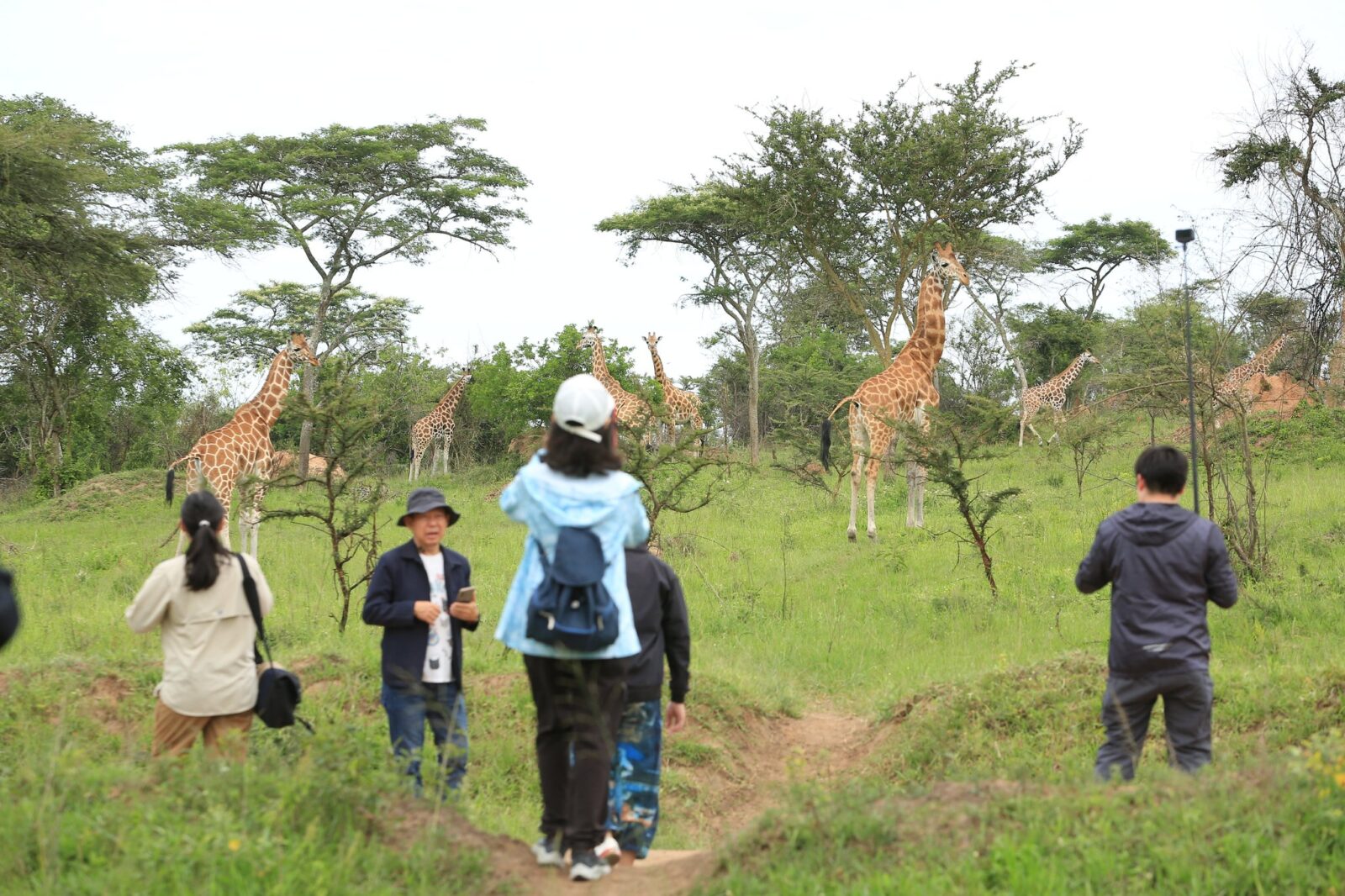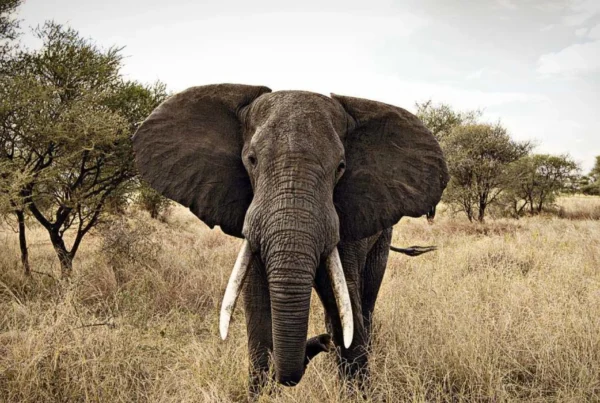Walking Safaris in Lake Mburo: A Close Encounter with Wildlife
Immersive Safari Experience
In Uganda’s western savannahs, Lake Mburo National Park offers a unique and immersive approach to wildlife observation through walking safaris. Unlike traditional game drives conducted from vehicles, walking safaris provide intimate, up-close encounters with animals and their habitats, enabling travelers to experience the park in a profoundly personal and interactive way. The trails of Lake Mburo, winding through rolling grasslands, acacia woodlands, wetlands, and lakeshores, allow for exploration at a human pace, fostering appreciation for the subtleties of the ecosystem.
Walking safaris are not merely about observation; they are a multisensory adventure, engaging sight, sound, and smell. The rustle of grasses, the distant calls of birds, and the gentle movement of zebras or antelopes are experienced in real time, creating a connection with wildlife that vehicles cannot replicate. This article explores the nuances of walking safaris in Lake Mburo, including preparation, wildlife encounters, safety measures, seasonal considerations, photography opportunities, and the broader ecological and educational benefits.
Understanding Walking Safaris in Lake Mburo
Walking safaris in Lake Mburo are structured to balance thrill with safety. Trained guides accompany visitors along designated trails, ensuring that encounters with zebras, antelopes, hippos, and other wildlife are both safe and enriching. The guides are knowledgeable in animal behavior, tracking, and conservation practices, providing interpretation that enhances understanding of species interactions, ecological balance, and habitat dynamics.
The park’s compact size and accessible terrain make it ideal for walking safaris. Unlike larger parks where wildlife may be spread over vast areas, animals in Lake Mburo are often observed near trails, offering opportunities for close but respectful observation. The diverse landscape, which includes open grasslands, shaded woodland paths, and lakeshore wetlands, provides varied visual and ecological experiences within a single walk, ensuring that visitors remain engaged throughout the safari.
Wildlife Encounters on Foot
Walking safaris provide a unique perspective on Lake Mburo’s wildlife, allowing travelers to observe behaviors and interactions that are often missed from vehicles. Zebras, with their striking black-and-white stripes, can be observed grazing or interacting in small herds, revealing social structures and patterns of hierarchy. Their movements and alert postures can be studied closely, offering insights into herd dynamics and predator vigilance.
Antelopes, including impalas, elands, and waterbucks, offer additional opportunities for observation. Walking quietly along trails, travelers can witness feeding behaviors, grooming, territorial displays, and interactions between adults and offspring. Hippos, typically visible in lakes and wetlands, present dramatic scenes when observed from safe distances along shorelines, particularly during early mornings and late afternoons when they are most active.
Small mammals, reptiles, and a wide variety of bird species further enrich the walking safari experience. African fish eagles, kingfishers, herons, and shoebills are commonly sighted, while smaller creatures such as duikers, monitor lizards, and marsh birds provide intricate details of ecosystem complexity. This close-range observation emphasizes the interconnectedness of species and habitats, allowing travelers to witness ecological relationships firsthand.
Preparation for a Walking Safari
Successful walking safaris require thoughtful preparation and planning. Visitors are advised to wear neutral-colored clothing that blends with the environment, reducing the risk of startling wildlife. Sturdy, closed-toe shoes with good grip are essential for navigating uneven or sometimes muddy terrain. Long sleeves and trousers offer protection against insect bites, thorns, and sun exposure, while hats and sunglasses provide comfort during sunny periods.
Guides provide essential briefings before each walk, covering topics such as animal behavior, trail navigation, emergency protocols, and safe distances. Small daypacks carrying water, snacks, insect repellents, and binoculars enhance comfort and observation capabilities. Additionally, walking safaris are typically conducted in small groups to maintain intimacy, reduce disturbance, and ensure that all participants receive attention from guides.
Seasonal Considerations
The seasonal variations in Lake Mburo significantly influence walking safari experiences. During the dry seasons, from June to August and December to February, trails are more accessible, wildlife congregates around water sources, and visibility is optimal for observing and photographing animals. The reduced vegetation enhances sightlines, allowing travelers to anticipate animal movements and approach observation points safely.
In the wet seasons, from March to May and September to November, the park becomes lush and verdant, providing a contrasting experience. Dense vegetation can obscure wildlife sightings, but the abundance of water attracts newborn animals and enhances bird activity, creating opportunities for observing life cycles and ecological interactions. Muddy trails may require additional caution, and guides often adjust routes to ensure safety and accessibility.
Safety Measures and Ethical Practices
Walking safaris, while immersive, require strict adherence to safety protocols. Guides maintain awareness of wildlife locations, monitor animal behavior, and instruct participants on how to act in proximity to animals. Encounters with larger herbivores like zebras, elands, or hippos are approached cautiously, and maintaining a safe distance is essential to prevent stress or defensive behaviors.
Ethical considerations are emphasized, including avoiding loud noises, refraining from feeding wildlife, and respecting natural behaviors. Photography and observation are conducted discreetly to minimize disturbance. By adhering to these practices, walking safaris preserve the integrity of the park’s ecosystems and ensure that visitors experience authentic wildlife interactions without compromising safety.
Activities and Experiences
Walking safaris in Lake Mburo are multifaceted, combining wildlife observation with ecological education and sensory exploration. Guided walks allow participants to track animals, identify footprints, and understand the significance of vegetation and water sources within the ecosystem. Guides interpret subtle cues, such as scent markings, animal calls, and behavioral changes, enriching the visitor’s understanding of wildlife ecology.
The integration of birdwatching enhances walking safaris, particularly in lakeshore and wetland areas. Travelers learn to identify species by sight and sound, appreciating migratory patterns, feeding habits, and mating displays. The slower pace of walking allows detailed observation, fostering patience, focus, and a deeper connection to the environment.
Walking safaris can also be combined with photography, offering opportunities to capture wildlife, landscapes, and ecological interactions. Telephoto lenses are useful for distant subjects, while wide-angle compositions integrate animals into their habitats. The close proximity and natural perspective achieved on foot create compelling, immersive images that convey scale, behavior, and environmental context.
Accommodation and Accessibility
Lodges and tented camps in Lake Mburo are strategically located to facilitate walking safaris, often adjacent to trails, lakeshores, or woodland areas. Accommodations provide comfort, security, and amenities such as private rooms, dining facilities, and verandas overlooking wildlife-rich areas. For travelers seeking an immersive experience, tented camps allow observation of sounds and movements of wildlife from the safety of secured sleeping quarters.
Accessibility is enhanced through carefully maintained trails, clear signage, and the presence of trained guides. The compact nature of the park ensures that walking routes are manageable, even for travelers with moderate fitness levels. Families, couples, and small groups can all participate safely, making walking safaris a versatile and inclusive activity.
Photography and Observation Tips
Photography on walking safaris requires adaptation to natural conditions. Low-light situations under dense woodland can challenge exposure settings, while moving animals require patience and anticipation. Observing animal behavior before attempting photographs increases the likelihood of capturing decisive moments, such as grazing, social interaction, or playful activity.
Framing and composition benefit from the intimate perspective of a walking safari. Foreground elements, natural light, and environmental features can be used to contextualize wildlife within their habitats. Bird photography is enhanced by binocular observation and careful positioning, allowing for close, unobtrusive captures of avian behaviors.
Educational and Conservation Value
Walking safaris emphasize education and conservation awareness, offering travelers firsthand experience of ecological interdependence. Guides interpret the roles of predators, herbivores, and birds, demonstrating the balance required for healthy ecosystems. Visitors learn about threats such as poaching, habitat degradation, and climate change, and are encouraged to support conservation efforts through responsible tourism.
Children and adults alike gain appreciation for sustainable interaction with nature, developing understanding of ethical wildlife observation and the importance of preserving natural habitats. These experiences foster long-term awareness and a connection to the conservation ethos of Lake Mburo National Park.
Enhancing the Walking Safari Experience
A comprehensive walking safari can be enhanced through pre-dawn and dusk excursions, which coincide with periods of high animal activity. Guides may also integrate tracking exercises, birdwatching, and ecological interpretation into the walk, ensuring a holistic experience. Incorporating rest periods at scenic viewpoints allows participants to absorb landscapes, photograph wildlife, and reflect on the natural environment.
Combining walking safaris with other activities, such as boat trips on Lake Mburo, cycling tours, or cultural visits to Banyankole communities, creates a rich, multifaceted experience. This integration provides insights into both ecological and human dimensions of the park, offering travelers a well-rounded and immersive safari adventure.
A Transformative Wildlife Encounter
Walking safaris in Lake Mburo National Park offer an unparalleled opportunity to experience wildlife intimately, safely, and ethically. Through careful planning, knowledgeable guides, and adherence to ethical principles, travelers can observe zebras, antelopes, hippos, and birds in their natural habitats while gaining deep ecological and conservation knowledge.
This form of safari emphasizes immersion, education, and connection, allowing participants to move at a human pace and experience the subtleties of the ecosystem that are often missed from vehicles. Travelers seeking transformative, close-up wildlife encounters in Uganda are encouraged to book Africa tours and safaris with WildHorn Africa, ensuring expert guidance, logistical support, and unforgettable walking safari experiences in the heart of Lake Mburo.




 WildHorn Africa – Authentic and unforgettable tours across Africa, guided by local experts who know the land, wildlife, and culture best.
WildHorn Africa – Authentic and unforgettable tours across Africa, guided by local experts who know the land, wildlife, and culture best.


